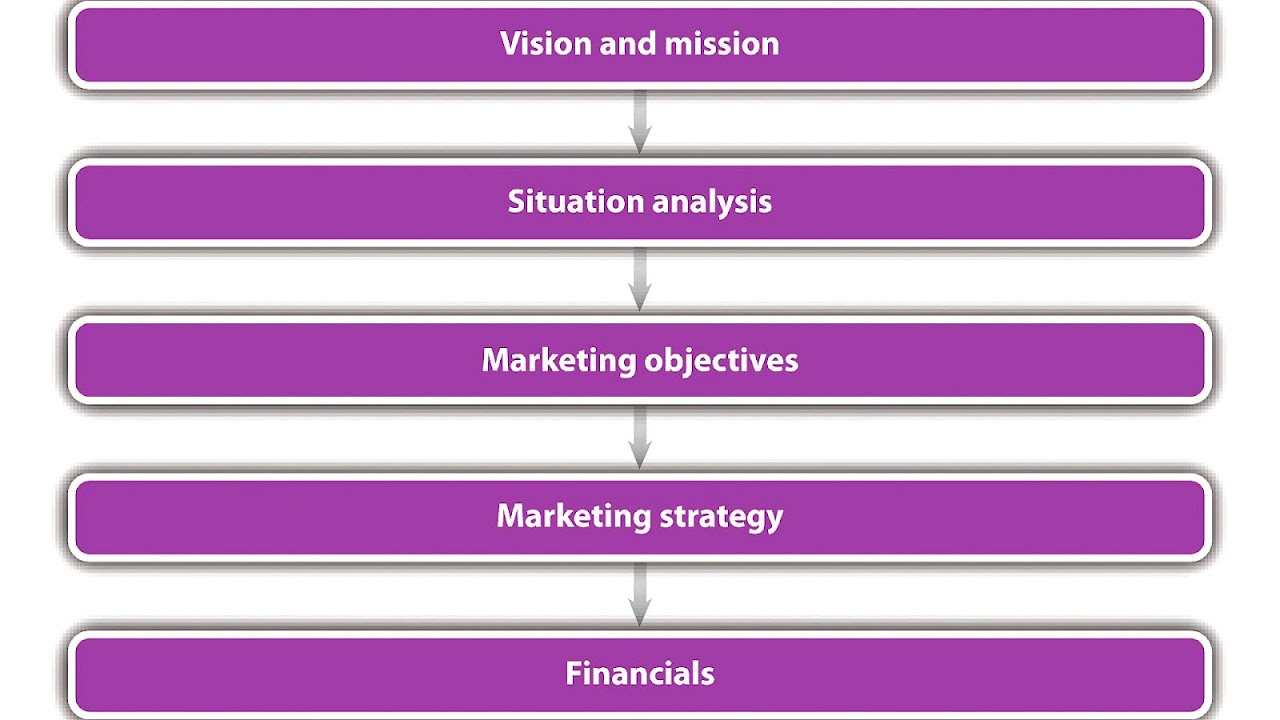
Situation analysis refers to a collection of methods that managers use to analyze an organization's internal and external environment to understand the organization's capabilities, customers, and business environment. The situation analysis consists of several methods of analysis: The 5Cs Analysis, SWOT analysis and Porter five forces analysis. A Marketing Plan is created to guide businesses on how to communicate the benefits of their products to the needs of potential customer. The situation analysis is the second step in the marketing plan and is a critical step in establishing a long term relationship with customers.
Marketing Plan
The situation analysis looks at both the macro-environmental factors that affect many firms within the environment and the micro-environmental factors that specifically affect the firm. The purpose of the situation analysis is to indicate to a company about the organizational and product position, as well as the overall survival of the business, within the environment. Companies must be able to summarize opportunities and problems within the environment so they can understand their capabilities within the market.

Maps, Directions, and Place Reviews
5C Analysis
While a situation analysis is often referred to as the "3C analysis", the extension to the 5c analysis has allowed businesses to gain more information on the internal, macro-environmental and micro-environmental factors within the environment. The 5C analysis is considered the most useful and common way to analyze the market environment, because of the extensive information it provides.
Company
The company analysis involves evaluation of the company's objectives, strategy, and capabilities. These indicate to an organization the strength of the business model, whether there are areas for improvement, and how well an organization fits the external environment.
- Goals & Objectives: An analysis on the mission of the business, the industry of the business and the stated goals required to achieve the mission.
- Position: An analysis on the Marketing strategy and the Marketing mix.
- Performance: An analysis on how effectively the business is achieving their stated mission and goals.
- Product line: An analysis on the products manufactured by the business and how successful it is in the market.
Competitors
The competitor analysis takes into consideration the competitors position within the industry and the potential threat it may pose to other businesses. The main purpose of the competitor analysis is for businesses to analyze a competitor's current and potential nature and capabilities so they can prepare against competition. The competitor analysis looks at the following criteria:
- Identify competitors: Businesses must be able to identify competitors within their industry. Identifying whether competitors provide the same services or products to the same customer base is useful in gaining knowledge of direct competitors. Both direct and indirect competitors must be identified, as well as potential future competitors.
- Assessment of competitors: The competitor analysis looks at competitor goals, mission, strategies and resources. This supports a thorough comparison of goals and strategies of competitors and the organization.
- Predict future initiatives of competitors: An early insight into the potential activity of a competitor helps a company prepare against competition.
Customers
Customer analysis can be vast and complicated. Some of the important areas that a company analyzes includes:
- Demographics
Collaborators
Collaborators are useful for businesses as they allow for an increase in the creation of ideas, as well as an increase in the likelihood of gaining more business opportunities. The following type of collaborators are:
Businesses must be able to identify whether the collaborator has the capabilities needed to help run the business as well as an analysis on the level of commitment needed for a collaborator-business relationship.
Climate
To fully understand the business climate and environment, many factors that can affect the business must be researched and understood. An analysis on the climate is also known as the PEST analysis. The types of climate/environment firms have to analyse are:
Situational Analysis Example For A Marketing Plan Video
SWOT
A SWOT Analysis is another method under the situation analysis that examines the Strengths and Weaknesses of a company (internal environment) as well as the Opportunities and Threats within the market (external environment). A SWOT analysis looks at both current and future situations, where they analyze their current strengths and weaknesses while looking for future opportunities and threats. The goal is to build on strengths as much as possible while reducing weaknesses. A future threat can be a potential weakness while a future opportunity can be a potential strength. This analysis helps a company come up with a plan that keeps it prepared for a number of potential scenarios.

Porter's Five Forces Industry Analysis
The Porter models involves scanning the environment for threats from competitors and identifying problems early on to minimize threats imposed by competitors. This model can apply for any type of business, from small to larger sized businesses. It is important to take note that the Porter's five forces model are not just for businesses, but can also be applied to a country to help gain insight into creating a competitive advantage in the global market. The ultimate purpose of the Porter's five forces model is to help businesses compare and analyze their profitability and position with the industry against indirect and direct competition.
- The threat of new entrant: New entrants affect the company's profits as the consumers have more variety to choose from.
- Bargaining power of buyers: The companies influence on the buyer to purchase their product or how much the buyer depends on the product being produced by the firm.
- Threat of substitute product of services: more than one firm producing similar or the same product or service.
- Bargaining powers of suppliers: Company dependence on resources the suppliers provide to create their product or services.
- Rival among existing competitors: Rivals fighting to be dominant in the market, to stay in business and maximize profit.
Source of the article : Wikipedia


EmoticonEmoticon